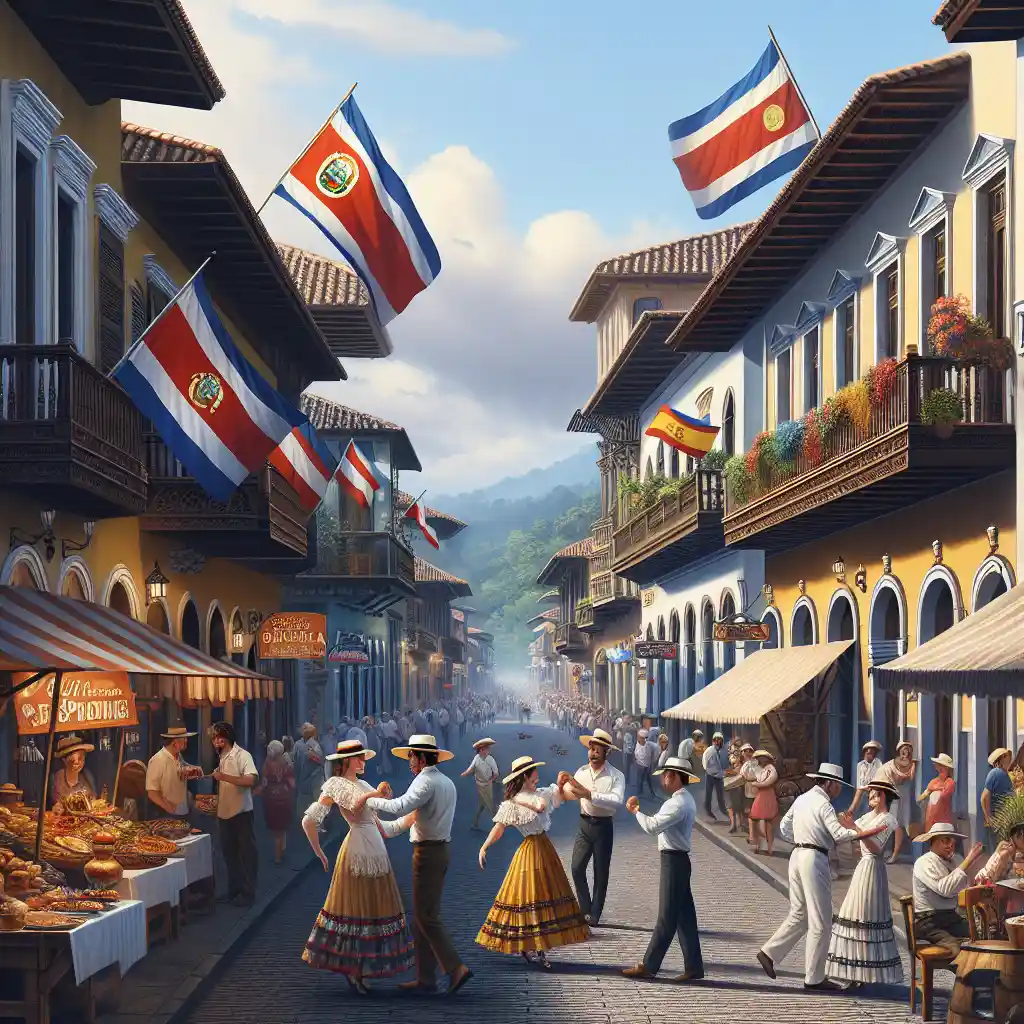Costa Rica, a vibrant and beautiful country located in Central America, is known for its rich biodiversity, stunning landscapes, and warm-hearted people. While its official language is Spanish, this fascinating nation has a multicultural and multilingual society that reflects its diverse history and influences. In this article, we will delve into the linguistic landscape of Costa Rica, exploring the dominance of Spanish, the presence of indigenous languages, the influence of English, and the role of other foreign languages. Additionally, we will discuss the significance of languages in Costa Rican culture and examine the future of language in this captivating country.
Understanding Costa Rica’s Linguistic Landscape
As we embark on a journey to uncover the languages spoken in Costa Rica, it is important to recognize the predominant influence of Spanish. Spanish is not only the official language but also the lingua franca of daily communication, education, media, and government affairs. The vast majority of Costa Ricans are fluent in Spanish, making it an integral part of daily life.
Costa Rica’s linguistic tapestry goes beyond the widespread use of Spanish. In addition to Spanish, Costa Rica is home to a diverse array of languages that reflect the country’s multicultural heritage. This linguistic diversity adds depth and richness to the cultural fabric of Costa Rica, showcasing the country’s history of indigenous and immigrant populations.
The Dominance of Spanish in Costa Rica
Spanish holds a central place in Costa Rican society, with almost the entire population being proficient in the language. From a young age, Costa Ricans are exposed to Spanish in their homes, schools, and communities. This linguistic dominance has shaped the country’s cultural norms and social interactions, creating a strong sense of identity and unity among its people.
Moreover, the influence of Spanish extends beyond just language; it permeates Costa Rican literature, music, art, and cuisine, further solidifying its position as a cornerstone of the nation’s cultural heritage. The nuances of the Spanish language in Costa Rica, including regional dialects and idiomatic expressions, add layers of complexity and charm to communication among its people.

Indigenous Languages: A Glimpse into the Past
Although Spanish is the primary language spoken in Costa Rica, the country has a rich indigenous heritage that is reflected in the presence of various indigenous languages. These languages are spoken by indigenous communities, such as the Bribri, Cabécar, Maleku, and Boruca, to name a few. While these languages face challenges in terms of preservation and transmission, efforts are being made to recognize and protect their cultural significance.
The indigenous languages of Costa Rica offer a window into the country’s pre-Columbian history and the traditions of its native peoples. Each indigenous language carries with it a unique worldview, cultural practices, and oral traditions that contribute to the country’s cultural mosaic. Efforts to revitalize and promote these languages not only preserve linguistic diversity but also foster a deeper appreciation for Costa Rica’s indigenous roots.
The Influence of English in Costa Rica
In addition to Spanish, English plays a significant role in Costa Rican society, particularly in the realms of education, tourism, and business. Let’s explore the impact of English in these different areas.
English Education in Costa Rican Schools
Recognizing the global importance of English as a lingua franca, Costa Rica has placed a strong emphasis on English education. Many schools offer English classes from a young age, providing students with the opportunity to develop their language skills. This focus on English fluency is motivated by the desire to prepare Costa Rican students for a globalized world and to create opportunities for international communication and employment.
Furthermore, the Ministry of Education in Costa Rica has implemented various programs to enhance English language teaching methodologies and resources in schools across the country. These initiatives aim to not only improve students’ language proficiency but also to foster cultural exchange and understanding between Costa Rica and English-speaking countries.
The Role of English in Tourism and Business
With its breathtaking beaches, lush rainforests, and incredible wildlife, Costa Rica has become a popular tourist destination. English proficiency among the local population is especially crucial in the tourism sector, where communication with international visitors is essential. Similarly, in the business world, English proficiency is highly valued due to the increasing global presence and influence of Costa Rican companies.
In the tourism industry, English-speaking tour guides and hospitality staff play a vital role in ensuring a seamless experience for visitors from English-speaking countries. Their ability to communicate effectively in English not only enhances the overall visitor experience but also contributes to the positive reputation of Costa Rica as a tourist-friendly destination. Moreover, in the business sector, English language skills open up doors to international trade and collaboration, allowing Costa Rican companies to engage with global markets and attract foreign investment.
Other Foreign Languages Spoken in Costa Rica
In addition to Spanish and English, Costa Rica boasts a multicultural society influenced by immigration from diverse regions of the world. Let’s explore the impact of other foreign languages on the linguistic tapestry of Costa Rica.
The Impact of Immigration on Language Diversity
Over the years, Costa Rica has become a melting pot of cultures and languages due to immigration from various countries. This has led to the emergence of immigrant communities that maintain their native languages, such as Portuguese, Italian, German, and French. These languages, albeit spoken by smaller numbers of people, contribute to the linguistic diversity of Costa Rican society and enrich its cultural fabric.

The Presence of French, German, and Italian in Costa Rica
Among the immigrant languages, French, German, and Italian have made a notable impact in Costa Rica. Their presence can be seen in cultural institutions, culinary traditions, and local communities. Connoisseurs of art and literature, for example, can find French-speaking communities that celebrate their heritage through events, clubs, and gatherings.
French, known as the language of love and romance, has found a special place in Costa Rica’s cultural landscape. From quaint cafes serving delicious pastries to art galleries showcasing French masterpieces, the French influence is evident in various aspects of Costa Rican life. The melodious sounds of French being spoken can be heard in pockets of the country where French expatriates have settled, creating a vibrant and welcoming atmosphere for both locals and visitors alike.
Similarly, the German community in Costa Rica has left a lasting imprint on the country’s traditions and customs. Oktoberfest celebrations, complete with traditional Bavarian music and cuisine, have become popular events in certain regions, attracting both German expats and Costa Ricans alike. The German language, with its precision and rich history, is upheld by generations of families who continue to pass down their linguistic heritage to ensure its preservation for years to come.
The Role of Language in Costa Rican Culture
Language plays a fundamental role in shaping and expressing culture. In Costa Rica, the diversity of languages is celebrated and serves as a testament to the country’s multicultural heritage. Let’s explore the relationship between language and culture in more detail.
Costa Rica’s linguistic landscape is not only defined by Spanish, but also by indigenous languages such as Bribri, Cabécar, and Maleku. These languages are not just means of communication but are repositories of ancient wisdom, cultural practices, and spiritual beliefs. The preservation of indigenous languages in Costa Rica is a testament to the country’s commitment to honoring its rich heritage and fostering diversity.
Language and Identity in Costa Rica
Language is intricately linked to individual and collective identities. The use of Spanish as the primary language has fostered a sense of national identity and unity among Costa Ricans. It serves as a unifying force that connects people from different regions and backgrounds.
Furthermore, Costa Rica’s linguistic diversity extends beyond Spanish and indigenous languages to include a growing English-speaking population. The rise of English as a second language in Costa Rica is not only a reflection of globalization but also a response to the increasing number of expatriates, tourists, and international businesses in the country. This linguistic shift highlights the evolving nature of Costa Rican culture and its openness to embracing new linguistic influences.
The Importance of Bilingualism in Modern Costa Rica
In today’s interconnected world, being bilingual is an invaluable asset. Costa Rica recognizes the importance of bilingualism and places significant emphasis on language education and proficiency. Bilingual Costa Ricans have access to a wider range of opportunities locally and globally, which contributes to personal growth, professional success, and cultural exchange.
Moreover, bilingualism in Costa Rica goes beyond mere language skills; it also fosters cross-cultural understanding and empathy. By learning a second language, Costa Ricans gain insight into different worldviews, traditions, and ways of life, promoting tolerance and cooperation in an increasingly diverse society. The ability to communicate effectively in multiple languages not only opens doors to economic opportunities but also deepens interpersonal connections and enriches the tapestry of Costa Rican culture.

The Future of Languages in Costa Rica
As Costa Rica continues to evolve, its linguistic landscape also faces new challenges and opportunities. Let’s take a look at what the future holds for the languages of this remarkable nation.
Language Preservation Efforts for Indigenous Languages
Costa Rica recognizes the importance of preserving its indigenous languages as a vital part of its cultural heritage. Efforts are being made to promote the teaching, learning, and revitalization of these languages within indigenous communities. By preserving indigenous languages, Costa Rica aims to safeguard its unique cultural legacy for generations to come.
The Growing Importance of English Proficiency
English proficiency continues to be a sought-after skill in Costa Rica, driven by the country’s increasing globalization and integration into international markets. As Costa Rican industries expand their presence on the global stage, a strong command of English becomes crucial for effective communication, collaboration, and economic success.
In conclusion, Costa Rica is a country where Spanish reigns supreme, serving as the backbone of communication and cultural identity. However, the influence of English, the presence of indigenous languages, and the impact of other foreign languages highlight Costa Rica’s rich linguistic tapestry. Through language, Costa Ricans both preserve their heritage and adapt to the changing demands of the modern world. As languages evolve and new cultures find their way into this enchanting nation, the future of language in Costa Rica is characterized by a commitment to linguistic diversity, cultural preservation, and global integration.



